
-
 'Veggie burgers' face grilling in EU parliament
'Veggie burgers' face grilling in EU parliament
-
Trio wins physics Nobel for quantum mechanical tunnelling

-
 Two years after Hamas attack, Israelis mourn at Nova massacre site
Two years after Hamas attack, Israelis mourn at Nova massacre site
-
German factory orders drop in new blow to Merz
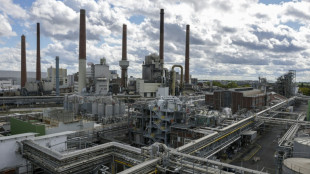
-
 Man City star Stones considered retiring after injury woes
Man City star Stones considered retiring after injury woes
-
Kane could extend Bayern stay as interest in Premier League cools

-
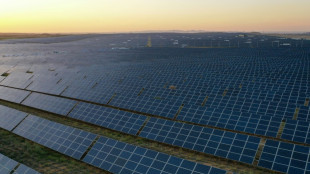 Renewables overtake coal but growth slows: reports
Renewables overtake coal but growth slows: reports
-
Extreme rains hit India's premier Darjeeling tea estates

-
 Raducanu retires from opening match in Wuhan heat with dizziness
Raducanu retires from opening match in Wuhan heat with dizziness
-
UK's Starmer condemns pro-Palestinian protests on Oct 7 anniversary

-
 Tokyo stocks hit new record as markets extend global rally
Tokyo stocks hit new record as markets extend global rally
-
Japan's Takaichi eyes expanding coalition, reports say

-
 Canadian PM to visit White House to talk tariffs
Canadian PM to visit White House to talk tariffs
-
Indonesia school collapse toll hits 67 as search ends

-
 Dodgers hold off Phillies, Brewers on the brink
Dodgers hold off Phillies, Brewers on the brink
-
Lawrence sparks Jaguars over Chiefs in NFL thriller

-
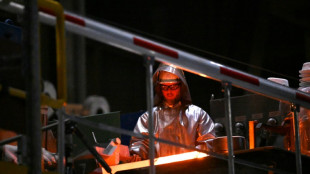 EU channels Trump with tariffs to shield steel sector
EU channels Trump with tariffs to shield steel sector
-
Labuschagne out as Renshaw returns to Australia squad for India ODIs

-
 Open AI's Fidji Simo says AI investment frenzy 'new normal,' not bubble
Open AI's Fidji Simo says AI investment frenzy 'new normal,' not bubble
-
Tokyo stocks hit new record as Asian markets extend global rally

-
 Computer advances and 'invisibility cloak' vie for physics Nobel
Computer advances and 'invisibility cloak' vie for physics Nobel
-
Nobel literature buzz tips Swiss postmodernist, Australians for prize

-
 Dodgers hold off Phillies to win MLB playoff thriller
Dodgers hold off Phillies to win MLB playoff thriller
-
China exiles in Thailand lose hope, fearing Beijing's long reach

-
 Israel marks October 7 anniversary as talks held to end Gaza war
Israel marks October 7 anniversary as talks held to end Gaza war
-
Indians lead drop in US university visas

-
 Colombia's armed groups 'expanding,' warns watchdog
Colombia's armed groups 'expanding,' warns watchdog
-
Shhhh! California bans noisy TV commercials

-
 Global Scams on the Rise: Over Half of Adults Worldwide Report Scam Encounters, 23% Lost Money
Global Scams on the Rise: Over Half of Adults Worldwide Report Scam Encounters, 23% Lost Money
-
HotelRunner and Visa Partner Globally to Power Embedded and Autonomous Finance in Travel

-
 Trump 'happy' to work with Democrats on health care, if shutdown ends
Trump 'happy' to work with Democrats on health care, if shutdown ends
-
Trump says may invoke Insurrection Act to deploy more troops in US

-
 UNESCO board backs Egyptian for chief after US row
UNESCO board backs Egyptian for chief after US row
-
Unreachable Nobel winner hiking 'off the grid'

-
 Retirement or marketing gimmick? Cryptic LeBron video sets Internet buzzing
Retirement or marketing gimmick? Cryptic LeBron video sets Internet buzzing
-
CAF 'absolutely confident' AFCON will go ahead in protest-hit Morocco

-
 Paris stocks slide amid French political upheaval, Tokyo soars
Paris stocks slide amid French political upheaval, Tokyo soars
-
EU should scrap ban on new combustion-engine sales: Merz
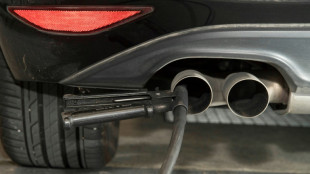
-
 US government shutdown enters second week, no end in sight
US government shutdown enters second week, no end in sight
-
World MotoGP champion Marquez to miss two races with fracture

-
 Matthieu Blazy reaches for the stars in Chanel debut
Matthieu Blazy reaches for the stars in Chanel debut
-
Macron gives outgoing French PM final chance to salvage government

-
 Illinois sues to block National Guard deployment in Chicago
Illinois sues to block National Guard deployment in Chicago
-
Exiled Willis succeeds Dupont as Top 14 player of the season

-
 Hamas and Israel open talks in Egypt under Trump's Gaza peace plan
Hamas and Israel open talks in Egypt under Trump's Gaza peace plan
-
Mbappe undergoing treatment for 'small niggle' at France camp: Deschamps

-
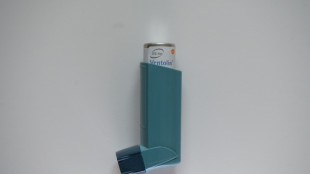 Common inhalers carry heavy climate cost, study finds
Common inhalers carry heavy climate cost, study finds
-
Madagascar president taps general for PM in bid to defuse protests

-
 UEFA 'reluctantly' approves European league games in US, Australia
UEFA 'reluctantly' approves European league games in US, Australia
-
Hundreds protest in Madagascar as president to announce new premier


What will the Artemis Moon base look like?
The next time NASA goes to the Moon, it intends to stay. Under the Artemis program, the US space agency plans to maintain a human presence, for the very first time, on a celestial body other than Earth.
But building a lunar base is no small feat. It will need power generators, vehicles and habitats, and the space industry is racing to meet the technological challenges.
"It's the Super Bowl of engineering," Neal Davis, lead systems engineer for the Lunar Terrain Vehicle at space company Dynetics, told AFP.
Dynetics revealed its prototype design for a Moon rover last month at the Space Symposium in Colorado Springs.
But it probably won't be until later Artemis missions -- 7 onwards -- "where we're starting to look at adding permanent habitations on the surface," said NASA associate administrator Jim Free.
Artemis 3, the first planned landing, won't happen until later this decade, so habitat building wouldn't start before the 2030s.
The base would likely comprise multiple sites, he added, to diversify the targets of scientific exploration and to offer more flexibility for the landings.
- Power and communications -
Despite this distant timeline, companies are already chomping at the bit.
"Step zero is communications," Joe Landon, CEO of Crescent Space, a new subsidiary of Lockheed Martin dedicated to lunar services, told AFP.
"Think about when you move into a new apartment, you've got to hook up your phone and your internet first."
Starting out with a pair of satellites, the company wants to become the Moon's internet and GPS provider.
This would relieve the strain on NASA's Deep Space Network, which threatens to overheat in the face of all the upcoming missions, including private ones.
Landon estimates the value of the lunar market will be "$100 billion over the next 10 years."
Next up: switching on the lights.
Astrobotic, with 220 employees, is one of three companies selected by NASA to develop solar panels.
They need to be placed vertically because at the Moon's south pole -- the intended destination because it has water in the form of ice -- the Sun barely peeps above the horizon.
About 60 feet (18 meters) high, the Astrobotic panels will be connected by cables running several miles (kilometers), said Mike Provenzano, the company's director of lunar surface systems.
The solar arrays will be fixed to vehicles that can run them out to different locations.
- Vehicles -
For its scientific expeditions, NASA has tasked industry with developing an unpressurized -- that is to say, open top -- rover for two people, ready by 2028.
Unlike the Apollo missions' rovers, it will also have to operate autonomously for outings without an astronaut.
This means surviving frigid lunar nights, which can last two weeks, with temperatures dropping to around -280 degrees Fahrenheit (-170 Celsius).
Many companies have made a start.
Lockheed Martin has partnered with General Motors, leaning on the auto giant's expertise in electric and off-road vehicles.
Dynetics, a subsidiary of engineering behemoth Leidos, has joined forces with Nascar.
Its prototype, which will achieve a top speed of nine miles per hour (15 kilometers per hour), includes a robotic arm and metal wheels that are braided like textiles to maximize traction on the sandy surface and deal with any rocks they encounter.
"But at the same time, they actually have a lot of openings to the outside so that they don't collect that sand and carry it with us," Davis said.
Moon dust, or regolith, poses a major challenge because, lacking erosion by water or wind, it is almost as abrasive as glass.
NASA has yet to announce the selected company or companies.
In the longer term, NASA is working with the Japanese space agency JAXA on a pressurized vehicle, in which astronauts won't need to keep their suits on.
- Habitats -
Finally, the crew will need a place to hang up their helmets and call home.
NASA has awarded a $57.2 million contract to the Texas-based company Icon, which specializes in 3D printing, to develop the technology needed to build roads, landing strips on the Moon, and ultimately, dwellings.
The idea is to use lunar soil as a material. Other companies, such as Lockheed Martin, are developing inflatable habitat concepts.
"The beautiful thing is you can land it on the moon and inflate it and now there's a much larger volume for the crew to live in and work in," Kirk Shireman, vice president for the Lockheed Martin Lunar Exploration Campaign, told AFP.
Inside would be bedrooms, a kitchen, a space for scientific instruments, etc. -- all mounted on a frame, so the habitat can be mobile.
The basic concept behind returning to the Moon under Artemis is to help NASA prepare for much more distant missions to Mars.
"Whatever money we have to spend to go develop these systems on the moon, we want those same systems to be applicable to go to Mars," said Shireman.
Y.Bouchard--BTB
